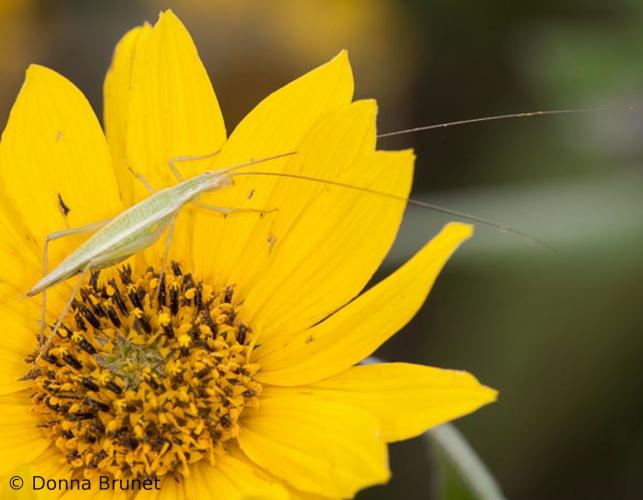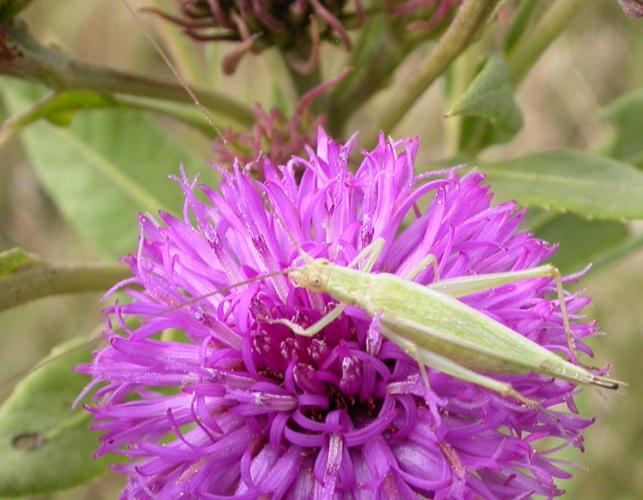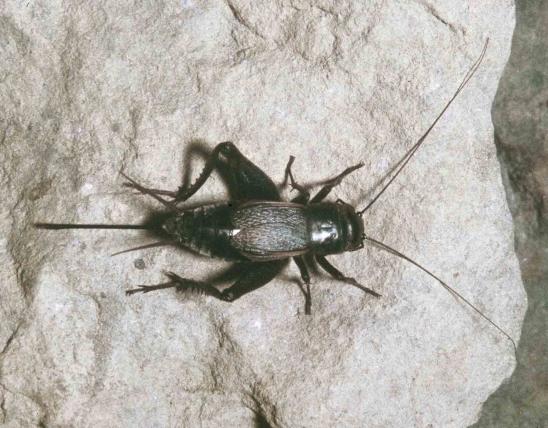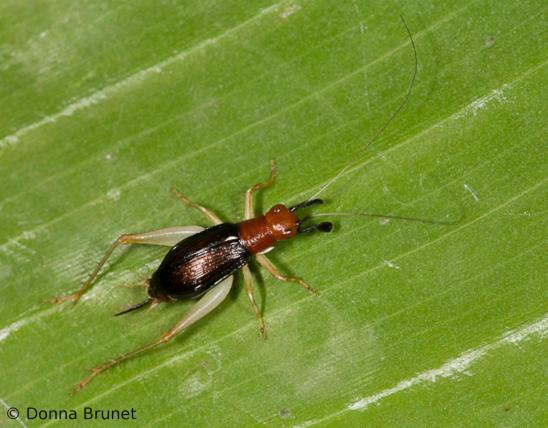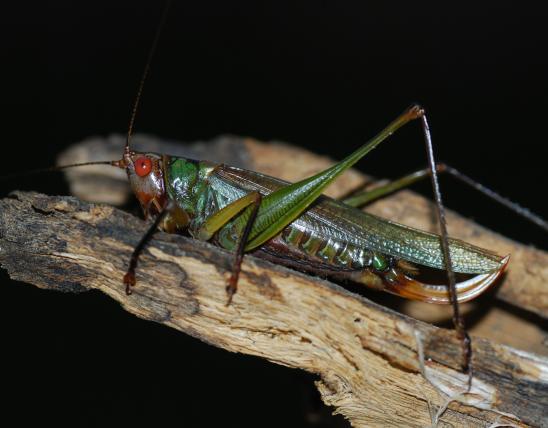
Tree crickets, or pale bush crickets, are a subfamily of crickets that are little seen but often heard. True to their name, instead of living on the ground, they live in trees, bushes, and tall herbaceous plants at least a foot or so above the ground. Most are delicate, pale green insects that blend in with their surroundings.
Looking more closely, this group has the following characters:
- The femurs (thigh-like segments) of the hind legs are thin.
- The tibias (shin-like segments) of the hind legs, on most species, have spines, and there are small teeth between the spines.
- The head is narrow and elongated.
- The mouthparts are pointed forward (not down).
- They have compound eyes, but they lack ocelli (simple eyes).
- On males, the forewings (used for chirping) are usually wider than the abdomen.
- Compared to the songs of other crickets, the songs of tree crickets are usually lower in pitch.
This group comprises about 20 species in North America in subfamily Oecanthinae. All but one are in genus Oecanthus. Oecanthus tree crickets are all pale green, and they all have spines on the tibiae (shin-like segments) of the hind legs. Some Oecanthus species to look for in all or parts of Missouri include:
- Prairie tree cricket (O. argentinus)
- Fast-calling tree cricket (O. celerinictus)
- Davis' tree cricket (O. exclamationis)
- Forbes' tree cricket (O. forbesi)
- Snowy tree cricket (O. fultoni)
- Broad-winged tree cricket (O. latipennis)
- Narrow-winged tree cricket (O. niveus)
- Black-horned tree cricket (O. negricornis)
- Pine tree cricket (O. pini)
- Four-spotted tree cricket (O. quadripunctatus)
The one species not in genus Oecanthus is the two-spotted tree cricket (Neoxabea bipunctata), a reddish-brown, pale-green-legged cricket that spends nearly all its time high in trees. It may be attracted to lights at night, however. It does not have spines on the tibiae (shin-like segments) of its hind legs.
To distinguish among the various species, you must generally grab a hand lens (or take some sharp closeup photos) and note details such as markings and bumps at the base of the antennae, configurations of spines on the legs, and other subtle characteristics.
You can also learn to distinguish the different species by their unique chirps and trills. Scientists analyze the calls using sonograms: visual charts of sounds, showing time on the x axis and pitch on the y axis, similar to musical notation.
Similar species: There are several other groups of crickets, grasshoppers, and katydids that look similar to some degree, and some have similar songs, too.
Adult length (not including appendages): ½–1 inch.
Statewide. Many species have broad ranges in the eastern United States, and different parts of Missouri may be part of the overall range. Some species are common statewide.
Habitat and Conservation
Although, true to their name, many tree crickets live in trees, many others live in shrubs or in tall herbaceous plants such as goldenrods, grasses, thistles, and so on. Different species are associated with different plants and heights.
Some of the crickets in this group are ones whose calls can be used as thermometers, because their regular, rhythmic chirping becomes slower as the temperature falls. The snowy tree cricket (O. fultoni) is the most famous, and it's even been called the thermometer cricket. To tell temperature with this species, the usual calculation goes like this: count the number of chirps in 13 seconds, then add 40 to that number to find the temperature in degrees Fahrenheit.
Food
Tree crickets eat a wide variety of foods. They may eat soft-bodied insects such as aphids as well as leaves, flowers, and fruits.
Life Cycle
Females deposit eggs in the stems of a suitable host plant. The eggs overwinter and hatch in late spring or early summer. The immature stages look basically like small, wingless versions of the adults. They feed, grow, and molt, with five immature states before a final molt renders them a winged, sexually mature adult. The process from hatching to adult takes about six weeks.
Human Connections
Many poetic things have been said about the melodious chirping of these crickets. Some, such as the snowy tree cricket, are used in the soundtracks for nighttime scenes to evoke the very essence of night. The sings of crickets and other insects are part of the magic of summer and autumn nights.
Ecosystem Connections
Many predators, large and small, eat tree crickets, which helps explain their camouflage coloration. A principal reason why so many birds migrate to North America in springtime is to take advantage of the explosion of insect life that happens in early summer. Birds, even those that usually eat seeds, need the protein of insects to feed their growing young, and tree crickets are part of the menu.
At least one type of wasp preys on tree crickets, capturing them and using them as food provisions for their young. Spiders, ambush and assassin bugs, robber flies, and other small predators feed on tree crickets, too.
Tree crickets that fly at night are preyed upon by bats, nighthawks, and other nocturnal insectivores.
